Impact of Canada wildfire smoke on Delaware and how it compares with other wildfires
As eastern Canada experiences severe wildfires, regions in the United States have been hit with declines in air quality that rival effects from large wildfires in recent years.
More than 6.7 million Canadian acres already have burned in 2023, federal officials announced last week, marking one of the worst starts to wildfire season. Around 14,000 people were forced to evacuate Quebec, and there are reports of over 150 fires, CBC News reported.
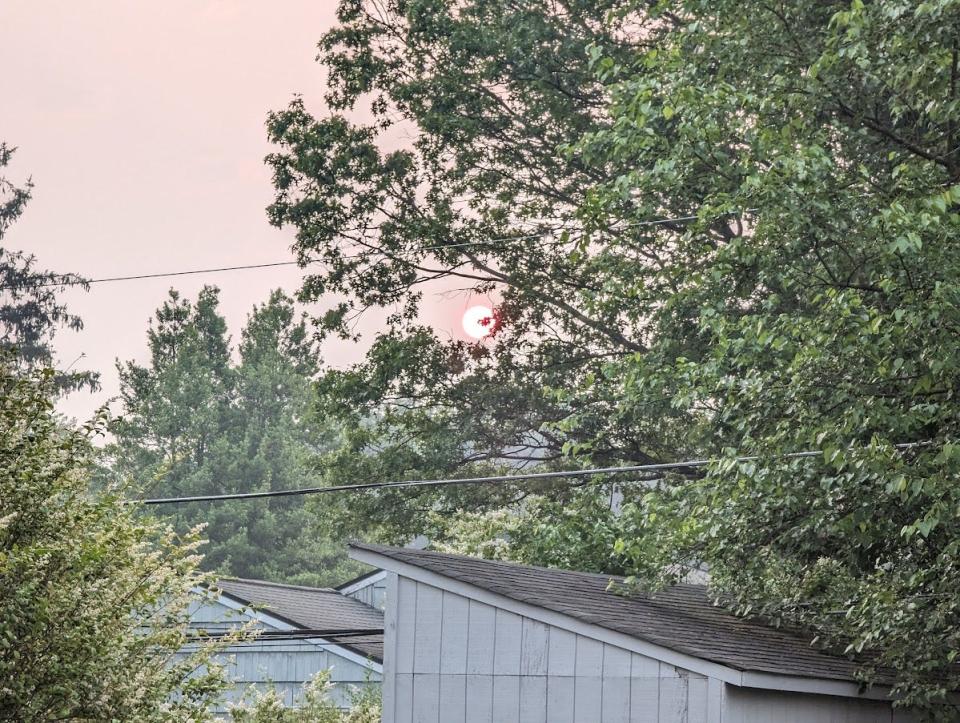
Officials said firefighters contained a wildfire in Nova Scotia on Sunday but that another one was still burning out of control covering nearly 100 square miles, according to the Associated Press.
Reports of reddish suns, hazy skies and degraded air quality have been reported in the Midwest and Northeast, with air quality alerts warning residents about unhealthy amounts of air pollution, advising people to limit outdoor activities and to consider wearing masks.
Air quality in Delaware
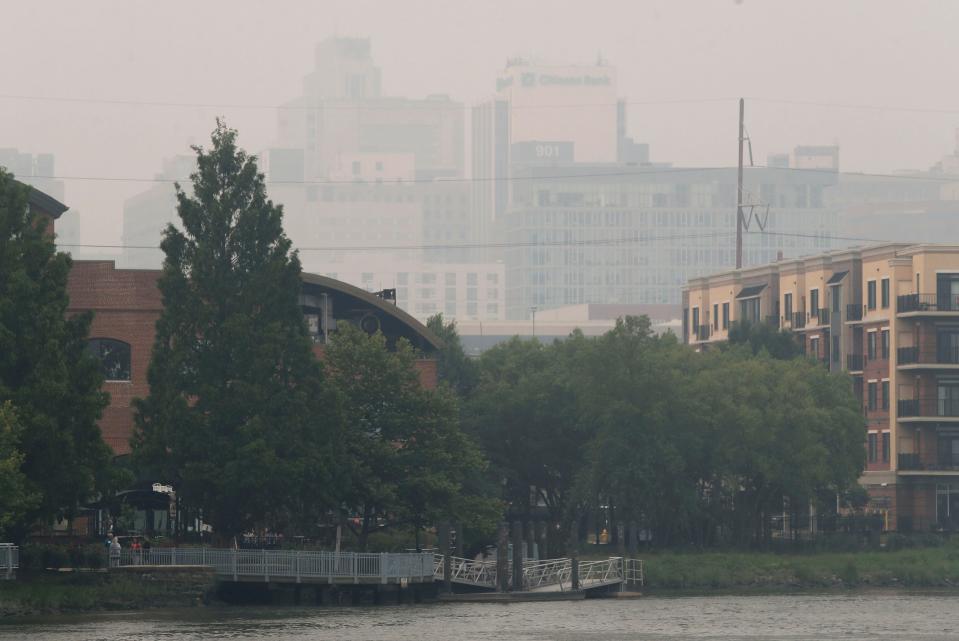
At about 9 a.m. Thursday, the air quality index report for Delaware ranged from “unhealthy” to “hazardous,” according to AirNow, a government-run air-quality monitoring website.
Greater New Castle County recorded an air quality index of 368, categorized as “hazardous''; the Wilmington area with 307, categorized as “hazardous”; Kent County with 256, categorized as “very unhealthy”; and Sussex County with 190, categorized as “unhealthy.”
This means the risk of health effects is increased for everyone, not just those who have lung and heart problems or other health conditions.
What does the impacted air quality mean?
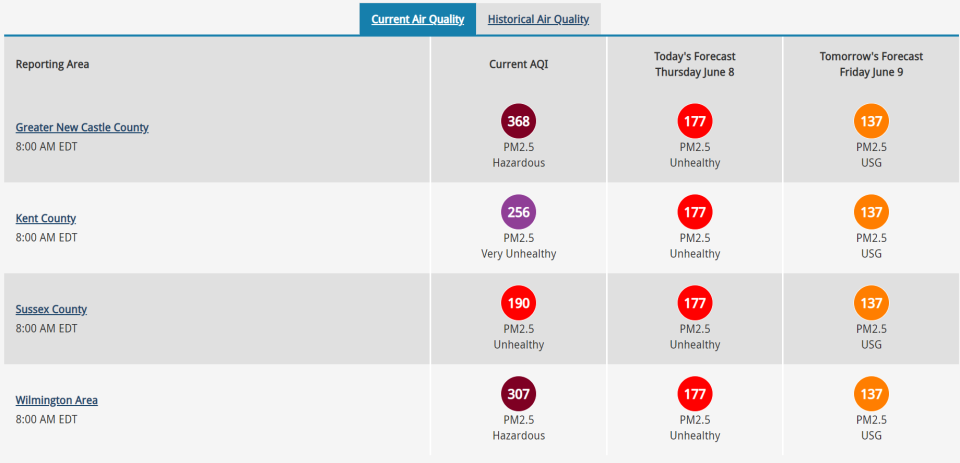
One of the reasons the air quality is so dangerous has to do with fine particulate matter of 2.5, which is what much of the Northeastern U.S. is seeing. These are inhalable particles with diameters that are generally 2.5 micrometers and smaller.
Particulate matter of this size is able to travel deep into the respiratory tract and reach the lungs. Exposure to these fine particles can cause short-term health effects such as eye, nose, throat and lung irritation; coughing; sneezing; runny nose; and shortness of breath.
Exposure also can affect lung function and worsen medical conditions such as asthma and heart disease.
Studies suggest that long-term exposure to fine particulate matter "may be associated with increased rates of chronic bronchitis, reduced lung function and increased mortality from lung cancer and heart disease," according to the New York State Department of Health.
People with breathing and heart problems, children and the elderly may be particularly sensitive to these particles.
Comparison of wildfire impacts in recent years
Woolsey Fire, Malibu, California
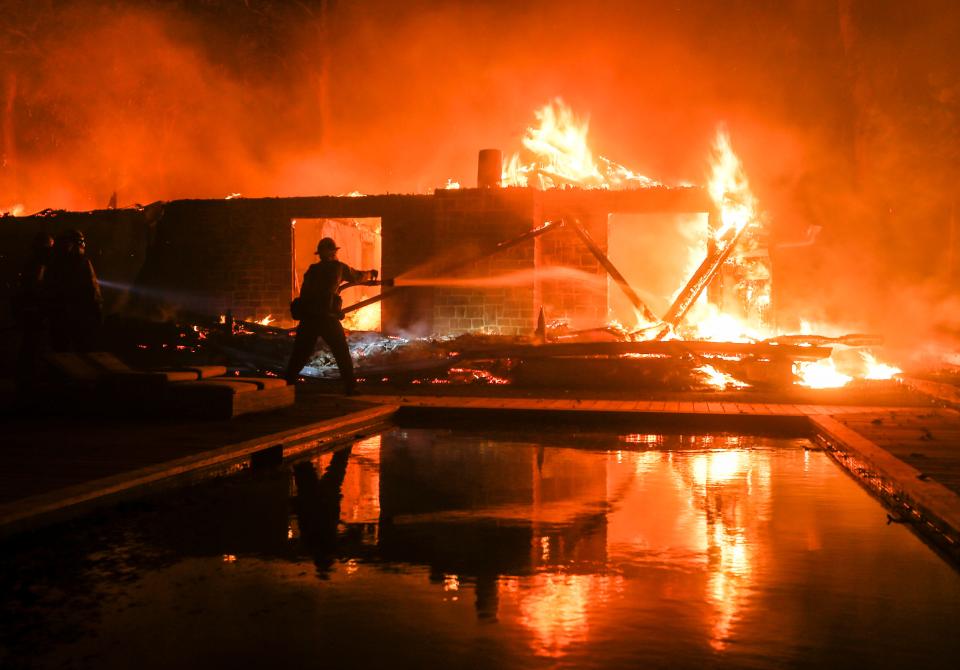
On Nov. 8, 2018, the Woolsey Fire broke out in Chatsworth, causing a mass evacuation for Malibu, California.
The fire burned 96,949 acres of land, destroyed 1,643 structures, killed three people and resulted in the evacuation of more than 295,000 people, according to Wildfire Today.
The fire was caused by a failure of equipment near the point of origin that led to arced power lines igniting tinder-dry grass. The Woolsey Fire reached 100% containment on Nov. 22, 2018.
Throughout the days of the blaze, California cities reported AQIs listed as “unhealthy,” with residents advised to avoid the outdoors as much as possible, according to CBS.
Details on smoke impact in Delaware: Where is the smoke coming from? Blame Wednesday's poor air quality on Canadian wildfires
Thomas Fire, Santa Paula, California
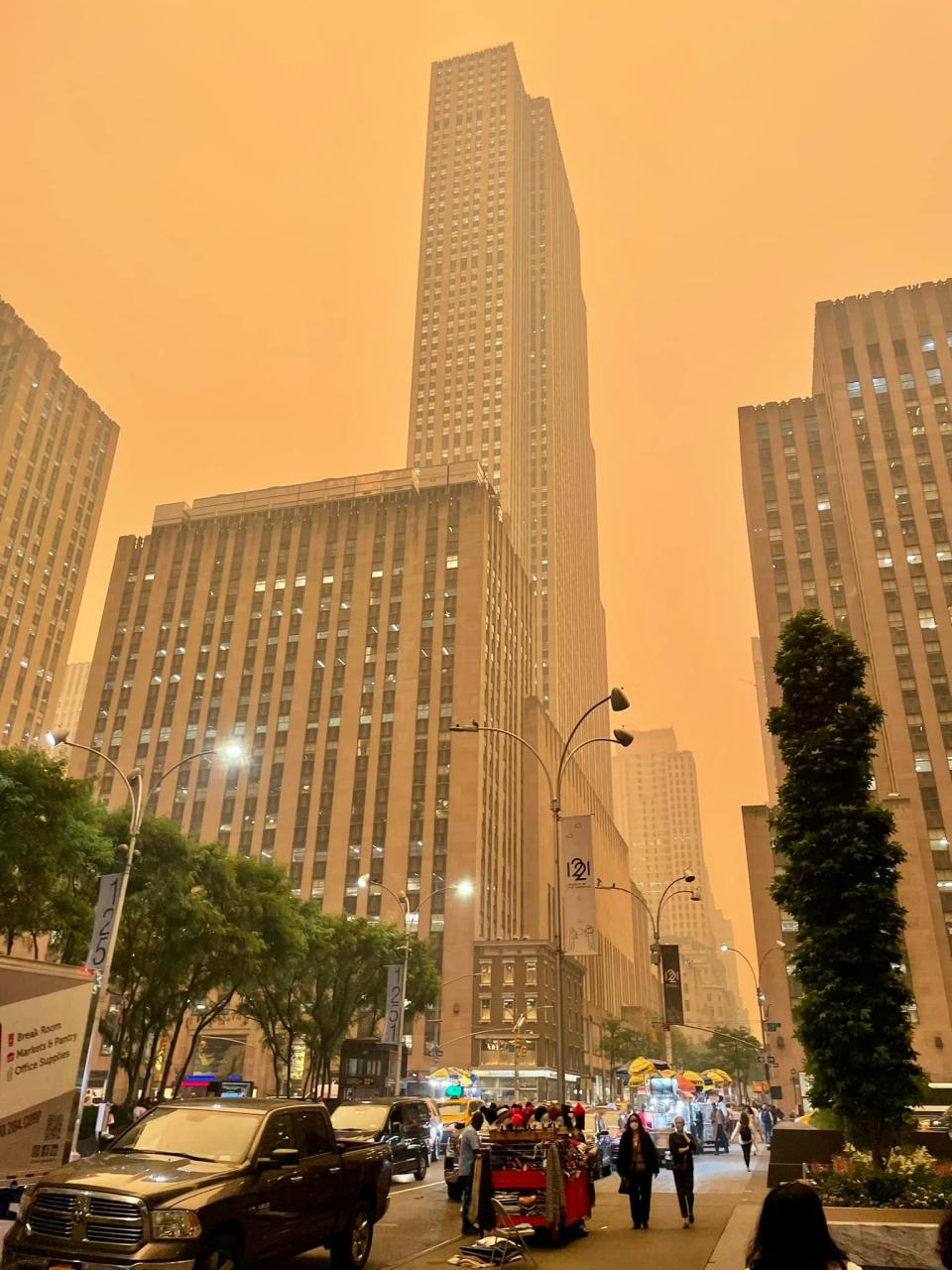
On Dec. 4, 2017, a fire began in Santa Paula, California, when strong winds caused power lines near Thomas Aquinas College to explode, igniting dry grass below, according to Wildfire Today.
It burned 281,893 acres before being fully contained on Jan. 12, 2018, and destroyed at least 1,063 structures and damaged 280 others. By Jan. 4 of that year, more than 104,607 residents were forced to evacuate due to the fire.
Wildfire Today reported an AQI of “unhealthy” for nearby California cities, with values ranging from 116 to 175.
Four County Fire, Kansas
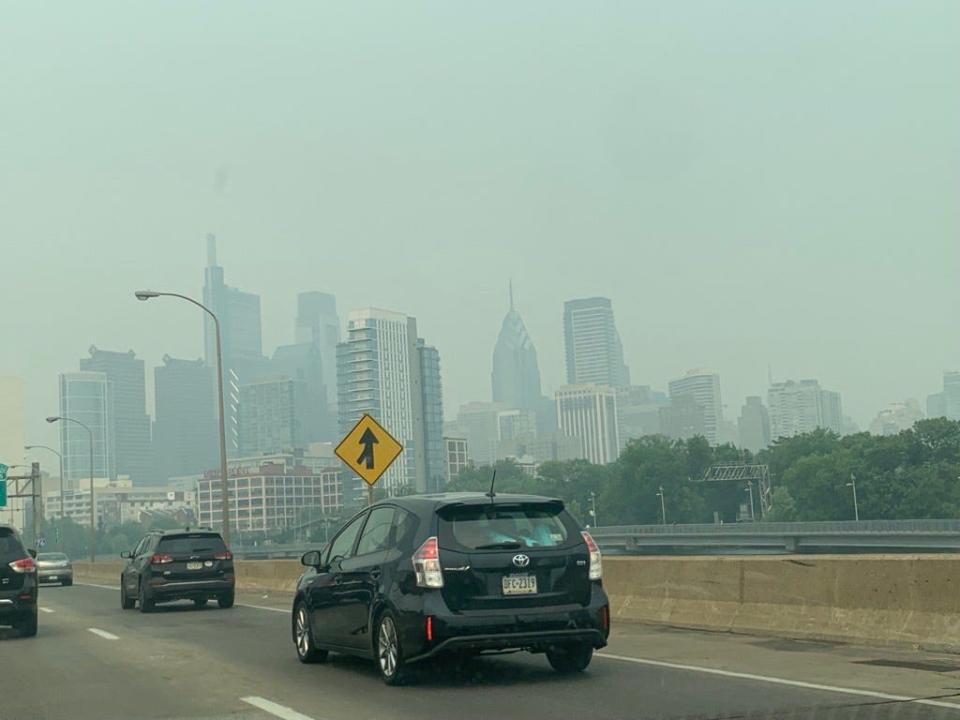
On Dec. 15, 2021, Kansas counties of Ellis, Osborne, Rooks and Russel, along with other portions of the state, were ravaged by wildfires after a derecho (a long-lived and damaging thunderstorm) and tornado outbreak hit the region.
Air quality updates for the region: How long is the wildfire smoke going to last? See forecast for Delaware, New Jersey & PA
Power lines knocked over by high winds ignited the blaze, causing a major path of destruction on land already facing drought conditions. The largest wildfire, the Four County Fire, resulted in numerous buildings being burned, hundreds of cattle dying and the scorching of 121,622 acres, according to the National Agricultural Statistics Service.
While smaller wildfires were contained in the coming days, the Four County Fire lasted until Dec. 23.
Reports documented an AQI of “unhealthy” for the area during this period of time, typically ranging between 130 and 150, but reaching as high as 163 on some days, according to the Topeka Capital-Journal.
Anthony DiMattia and Isabel Hughes contributed to this report.
Got a tip or a story idea? Contact Krys'tal Griffin at kgriffin@delawareonline.com.
This article originally appeared on Delaware News Journal: Comparing effects of Canada wildfire smoke with recent US wildfires

